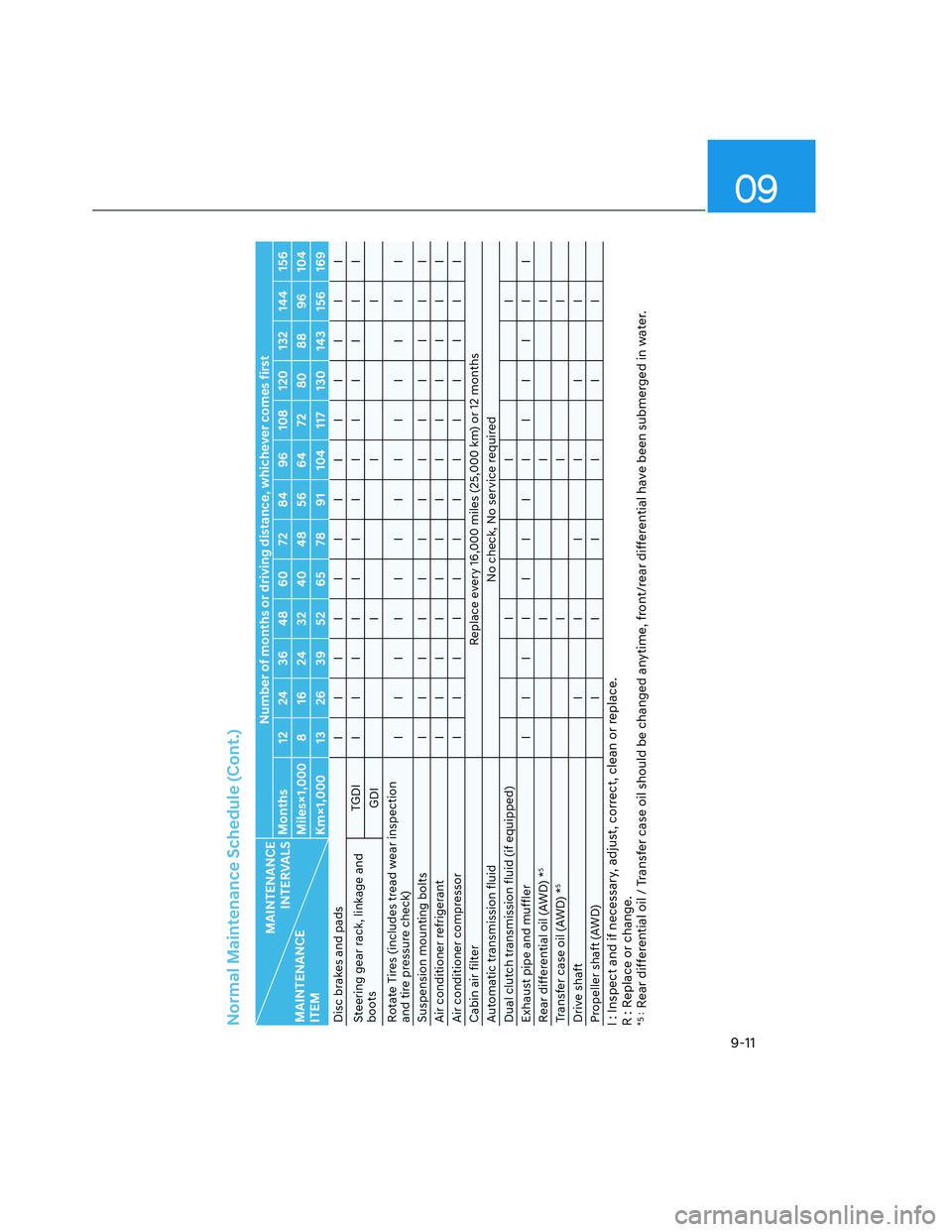First oil change HYUNDAI SANTA CRUZ 2022 Owners Manual
[x] Cancel search | Manufacturer: HYUNDAI, Model Year: 2022, Model line: SANTA CRUZ, Model: HYUNDAI SANTA CRUZ 2022Pages: 598, PDF Size: 9.88 MB
Page 296 of 598

Driving Your Vehicle
6-22
• The advanced wet-clutch dual clutch
transmission in your vehicle can be
thought of as an automatically shifting
manual transmission. It gives the
driving feel of a manual transmission,
yet provides the ease of a fully
automatic transmission.
• When D (Drive) is selected, the
transmission will automatically
shift through the gears similar to a
conventional automatic transmission.
With a wet-type dual clutch
transmission, however, the engine
torque that is transmitted directly
from the engine to the transmission
is transferred by a clutch pack that
is lubricated in oil. The oil's primary
purpose is to cool the clutch, and
because of lubricating properties of
the oil and this cooling effect, gear
shifts are smooth as well as direct.
• The wet-type dual clutch transmission
allows for better acceleration
performance and increased fuel
efficiency while driving. But it differs
from a conventional automatic
transmission because it does not
incorporate a torque converter.
Instead, the transition from one gear
to the next is managed by clutch slip,
especially at lower speeds.
As a result, shifts are sometimes more
noticeable, and a light vibration can
be felt as the transmission shaft speed
is matched with the engine shaft
speed. This is a normal condition of
the dual clutch transmission.
• The wet-type clutch transfers torque
more directly and provides a direct
drive feeling which may feel different
from a conventional automatic
transmission. This may be more
noticeable when launching the vehicle
from a stop or when traveling at low,
stop-and-go vehicle speeds. • When rapidly accelerating from a
lower vehicle speed, the engine
rpm may increase dramatically as a
result of clutch slip as the dual clutch
transmission selects the correct gear.
This is a normal condition.
• When accelerating from a stop on
an incline, press the accelerator
smoothly and gradually to avoid any
shudder feeling or jerkiness.
• When traveling at a lower vehicle
speed, if you release the accelerator
pedal quickly, you may feel engine
braking before the transmission
changes gears. This engine braking
feeling is similar to operating a
manual transmission at low speed.
• When driving downhill, you may
wish to move the gear shift lever to
Manual Shift mode and downshift to
a lower gear in order to control your
speed without using the brake pedal
excessively.
• When you turn the engine on and off,
you may hear clicking sounds as the
system goes through a self-test. This
is a normal sound for the dual clutch
transmission.
• During the first 1000 miles (1,500km),
you may feel that the vehicle may not
be smooth when accelerating at low
speed. During this break-in period, the
shift quality and performance of your
new vehicle is continuously optimized.
Page 516 of 598

Maintenance
9-8
Normal Maintenance Schedule
MAINTENANCE
INTERVALS
MAINTENANCE
ITEMNumber of months or driving distance, whichever comes first
Months 12 24 36 48 60 72 84 96 108 120 132 144 156
Miles×1,000 8 16 24 32 40 48 56 64 72 80 88 96 104
Km×1,000 13 26 39 52 65 78 91 104 117 130 143 156 169
Engine oil and engine oil filter
*1
RRRRRRRRRRRRR
Drive belts
*2
At first, inspect at 48,000 miles (78,000 km) or 72 months.
Thereafter, inspect every 8,000 miles (13,000 km) or 12 months
Fuel additives *
3
Add every 8,000 miles (13,000 km) or 12 months
I : Inspect and if necessary, adjust, correct, clean or replace.
R : Replace or change.*1 :
Check the engine oil level and leak every 350miles (500km) or before starting a long trip. As it is normal for engine oil to be
consumed during driving, the engine oil level should be checked on regular basis. The engine oil change interval for normal
operating conditions is based on the use of the recommended engine specification. If the recommended engine oil specification is
not used, then replace the engine oil according to the maintenance schedule under severe operating conditions.
*2 :
The drive belt should be replaced when cracks occur or tension is reduced excessively.
*3 :
If TOP TIER Detergent Gasoline is not available, one bottle of additive is recommended. Additives are available from your authorized
HYUNDAI dealer along with information on how to use them. Do not mix other additives.
Page 519 of 598

09
9-11
Normal Maintenance Schedule (Cont.)
MAINTENANCE
INTERVALS
MAINTENANCE
ITEMNumber of months or driving distance, whichever comes first
Months 12 24 36 48 60 72 84 96 108 120 132 144 156
Miles×1,000 8 16 24 32 40 48 56 64 72 80 88 96 104
Km×1,000 13 26 39 52 65 78 91 104 117 130 143 156 169
Disc brakes and padsIIIIIIIIIIIII
Steering gear rack, linkage and
bootsTGDI IIIIIIIIIIIII
GDI I I I
Rotate Tires (includes tread wear inspection
and tire pressure check)IIIIIIIIIIIII
Suspension mounting boltsIIIIIIIIIIIII
Air conditioner refrigerantIIIIIIIIIIIII
Air conditioner compressorIIIIIIIIIIIII
Cabin air filter Replace every 16,000 miles (25,000 km) or 12 months
Automatic transmission fluid No check, No service required
Dual clutch transmission fluid (if equipped) I I I
Exhaust pipe and mufflerIIIIIIIIIIIII
Rear differential oil (AWD) *
5
III
Transfer case oil (AWD) *
5
III
Drive shaft IIIIII
Propeller shaft (AWD)IIIIII
I : Inspect and if necessary, adjust, correct, clean or replace.
R : Replace or change.*5 :
Rear differential oil / Transfer case oil should be changed anytime, front/rear differential have been submerged in water.